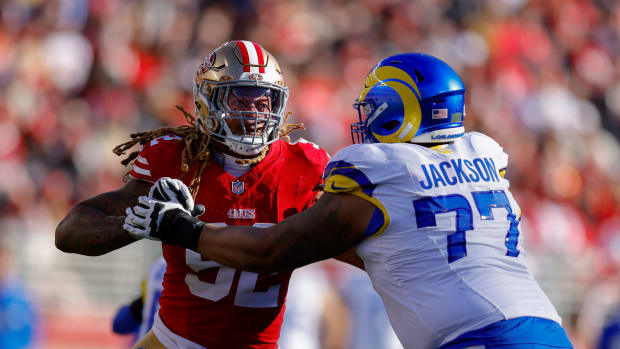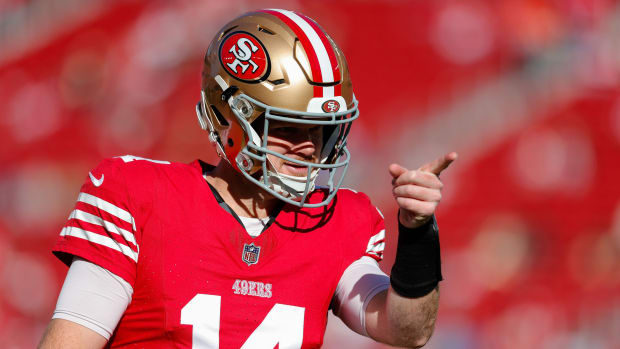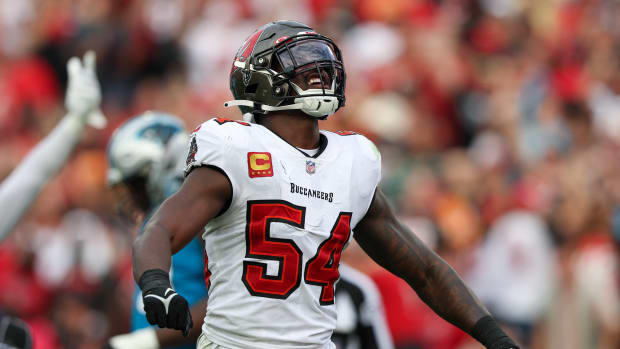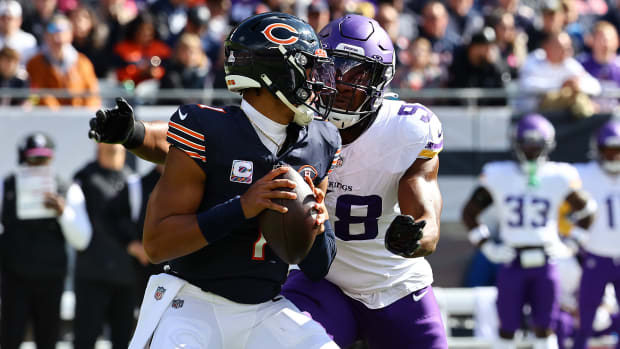How analytics will improve football
Let’s do a little comparison on athlete analytics today, and what they could be tomorrow.
Today: Star NFL cornerback has had a strong week of practice, but during an intense game on Sunday he starts to show fatigue. Coaches aren’t sure if it’s the normal rigors of the game or the amount he’s worked covering one of the league-leading receivers. Maybe it was the hard practices and travel. Early in the fourth quarter, this cornerback goes down to the turf. Sprained knee, they say. Out for the rest of the game, they say. And likely to miss next week’s division showdown, too.
Tomorrow: Star NFL cornerback has had a strong week of practice, but by Thursday trainers are pulling him out of certain drills early so as not to overwork his legs. During Sunday’s game, real-time data based on his body’s biometrics and his in-game hits show that an especially active second quarter—and that hit he laid on the running back with 4:13 left in the half—has taken an abnormally large toll on his body compared to previous games. Coaches start to hold him out of plays early in the second half, giving his body a bit of extra rest, especially on downs in which they think the opponent will run. The cornerback stays fresh enough to play deep into the fourth quarter, breaking up a pass on a critical drive late in the game that proves huge in holding a lead. Post-game, the cornerback says he can’t wait to play in next week’s division showdown.
Look for new entries in the Super Bowl 100 series, presented by Gatorade and Microsoft Surface, at SI.com/SB100 and Wired.com/SB100
Chapter 1, Oct. 7 TRAINING
Chapter 2, Oct. 28 EQUIPMENT
Chapter 3, Nov. 18 STADIUMS
Chapter 4, Dec. 9 CONCUSSIONS
Chapter 5, Dec. 16 MEDIA
Chapter 6, Dec. 30 VR
Chapter 7, Jan. 6 NFL IN SOCIETY
Chapter 8, Jan. 13 TRACKING
Chapter 9, Jan. 20 STRATEGY
Chapter 10, Jan. 27 SB 100
ROAD MAP TO
THE FUTURE
Getting to this future of athlete analytics not only protects players individually, but it betters the game for teams, leagues and fans, says Adir Shiffman, executive chairman of Australia-based Catapult, the world’s leading athletic tracking company.
Think about it this way: The No. 1 driver in fan engagement (and ultimately, team success) is having a star player on the field performing. So, reducing injuries (especially preventable ones) not only keeps players in the game, it keeps fans engaged. Using athlete analytics to spot potential overuse and risk areas will continue to evolve the way teams practice and the way they substitute, keeping players healthy, a win-win-win-win for players, teams, leagues and fans.
“The way it looks today you have this disconnect around the world between teams and leagues,” Shiffman tells SI.com from Melbourne. “Teams have been using it [analytics] for quite a while now predominantly for player improvement and player welfare. It has proven to be extremely effective. Leagues have come at it from a media angle and fan engagement. Soft tissue injuries are almost always predictable and can be prevented with the right wearable. This needs to be a fundamental reason to wear [trackers] in games.”
Sure, hardware will improve in the future, allowing companies to pack more sensors and technology into smaller devices, but it is the software that will drive the future, from the coach-needed analytics to the fan-enjoyed displays. New software and algorithms can provide better real-time, in-game data for both coaches and fans. We can already see the raw data, how fast a player runs or his heartbeat, for example. But Shiffman calls it a “very poor fan experience.”
“It is not sexy and interesting to show raw sensory data,” he says. “That is one-hit data. Once you see it, it gets boring very quickly.”
Shiffman says that future software will deepen a fans’ understanding of the game by taking that raw data and weaving it together to provide a story they can follow.
Let’s take a tackle in the NFL, for example. Already the sensors in the hardware measure that tackle. There’s technically no tackle chip, but the Catapult-developed algorithms can log the direction, energy and more to effectively recognize a tackle and explain some of the basics of it. In the future, those algorithms will not only cover the tackle, but will tell how a player has reacted since a tackle, how their performance and physical attributes have changed.
Shiffman looks forward to a future where everyone embraces the world of athlete analytics. North America lags far behind the rest of the world in adopting new technology, as there are leagues worldwide that already substitute in-game based on real-time analytics. Most North American leagues won’t even allow analytics in the game. The future will change that.
“When we first came to the U.S. in 2012, we were pretty close to ridiculed as a technology and a solution,” he says. “Coaching staffs mostly didn’t believe in technology. The sports science and high-performance manager was not a thing in the U.S.” Now Catapult has hundreds of U.S. clients, including about two-thirds of all NFL teams and more than half the NBA. “The U.S. has been slow to the party, but fast to embrace the technology as a benefit.”
As more entities sign on to that benefit, companies can better integrate products. You’ll have the analytics used by high-performance coaches and strength coaches and fully integrated packages that have dynamic reports of that data for general managers, coaches and fans. All together. All in one small technologically advanced package. All driven by software.
Tim Newcomb covers stadiums, sneakers and design for Sports Illustrated. Follow him on Twitter at @tdnewcomb.





































